FW

The Indian textile and clothing industry, heavily reliant on cotton, remains a cornerstone of the nation's economy, contributing 12 per cent to industrial production, 8 per cent to exports, and generating approximately Rs 40,000 crores in GST revenue. Employing around 110 million people, the sector has been growing at a CAGR of 6 per cent, despite facing numerous challenges. This growth is attributed to the availability of domestic cotton and proactive government policies.
Ambitious growth targets
India aims to scale its textile industry from a current size of $162 billion to $350 billion by 2030. To achieve this, the industry requires a significant increase in raw material production. Presently, India produces about 5.5 billion kgs of cotton fibers and 4 billion kgs of man-made fibers (MMF). The target necessitates expanding raw material production to 20 billion kgs.
Government initiatives
The NDA Government, under the leadership of Prime Minister Narendra Modi, has recognized the urgent need to address raw material challenges to bolster global competitiveness and drive growth. Several policy initiatives have been implemented to support this goal:
Technology mission on cotton: The industry is calling for the announcement of TMC 2.0 to enhance cotton production.
Duty exemptions: Import duties on Extra Long Staple (ELS) cotton have been exempted, and FTAs with UAE, Mauritius, and Australia allow duty-free imports of 300,000 bales of ELS cotton.
Financial support: Rs 17,822 crores have been allocated to the Technology Upgradation Fund (TUF) Scheme, and a Rs. 6,006 crores special package has been announced for the garment industry.
Skill development: The National Skill Development Corporation and the PMKVY scheme are being utilized to improve skills, with a dedicated Samarth scheme for the textile industry.
GST and MSME support: The GST rate for the entire cotton textile value chain has been standardized at 5 per cent, enhancing GST revenue from Rs 3,600 crores to Rs 35,000 crores and reducing clothing costs. The MSME sector benefits from new eligibility criteria and Covid relief packages.
PLI scheme: Promotes scale operations and encourages man-made fiber (MMF) and technical textiles production.
NTTM scheme: Provides Rs1,480 crores for technical textiles, bolstering innovation and production.
Removal of Anti-Dumping duties: Duties on PTA, MEG, and other man-made fibers and filaments have been lifted to reduce costs.
Policy impact and future prospects
SK Sundararaman, re-elected Chairman of the Southern India Mills’ Association (SIMA) and newly elected Chairman of SIMA CD & RA, has appealed for further measures, including the Technology Mission on Cotton and addressing the inverted duty structure in MMF and textile processing. He commended the government for various policies that have fostered industry growth and innovation.
The introduction of "Kasturi Cotton Bharat" has created a brand for Indian cotton, while the Bharat Tex Expo, launched in 2023, showcased India's potential as a global textile hub. The next Bharat Tex event is scheduled for February 14-17, 2024, expected to attract substantial international participation.
Leadership and future direction
At the recent 65th AGM of SIMA, Sundararaman was re-elected as Chairman for 2024-25. Alongside him, Durai Palanisamy was re-elected Deputy Chairman, and S Krishnakumar as Vice-Chairman. Their leadership is expected to drive continued progress in the sector, supported by ongoing government initiatives and policy enhancements.
Sundararaman also expressed gratitude to Union Finance Minister Nirmala Sitharaman for her support, including facilitating industry interactions and addressing grievances related to policy and duty structures.
In conclusion, the Indian textile industry is set for substantial growth, driven by strategic policy interventions and a robust support system aimed at enhancing both domestic and international market presence.
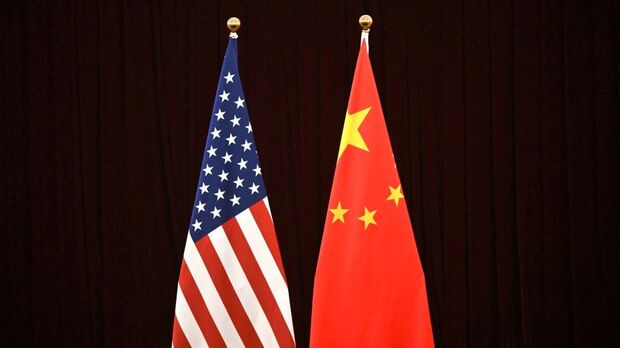
The Biden administration has announced a new wave of tariffs on Chinese goods, targeting a range of products, including apparel and textiles, in an effort to protect American industries and maintain a tough stance on China ahead of the upcoming presidential election. The new tariffs, ranging from 7.5 per cent to 100 per cent, cover a wide array of products such as: clothing, solar panels, electric vehicles, steel, and syringes. The administration argues these measures are necessary to combat the threat of cheap Chinese imports undermining US manufacturing.
The new tariffs, which come into effect on September 27, aim to address long-standing concerns about China's trade practices. The Biden administration also proposed changes to the "de minimis" rule, which previously allowed Chinese goods worth less than $800 to enter the US without paying tariffs. This move targets major Chinese exporters like Shein and Temu that have become popular with American consumers.
Katherine Tai, the US Trade Representative, stated that the tariffs would target China's "harmful policies and practices" that negatively affect American workers and businesses. The administration released a 187-page report supporting the tariffs, stating they have been effective in reducing US dependence on China, with China’s share of US imports falling to 13.7 per cent in 2023 from 21.6 per cent in 2017.
Impact on apparel and textiles
The apparel and textile industry, a significant portion of US imports from China, is expected to feel the effects of these tariffs. Clothing and related goods have been included in the new tariff list, potentially driving up prices for US consumers and affecting the supply chain. Retailers and manufacturers that rely heavily on Chinese apparel imports may face increased costs, leading to price hikes for clothing in the US market. This move could force companies to seek alternative sources for textiles and apparel, a process that may take time and come with higher costs.
China's response, vows retaliation
China has expressed strong dissatisfaction with the US's new tariff measures. A spokesperson for China’s Ministry of Commerce (MOFCOM) called the tariffs a product of "unilateralism and protectionism" and urged the US to correct its "wrong doings" immediately. China has vowed to take necessary measures to protect the interests of Chinese enterprises.
The spokesperson for the Chinese Embassy in Washington labelled the tariffs as undermining the international trade order, stating that they fail to improve the US trade deficit or industrial competitiveness. China has criticized the US for wielding tariffs as a political tool, disrupting global supply chains, and ultimately pushing up prices for American consumers.
Industry concerned
The decision has sparked widespread criticism, with trade groups, port authorities, and international organizations raising concerns about the long-term economic impact. The Information Technology Industry Council, representing technology firms, warned that tariffs on chips and other electronics would further disrupt global supply chains. The American Association of Port Authorities (AAPA) argued that the tariffs would harm port efficiency, capacity, and increase consumer prices.
Experts warn the increased tariffs may ultimately harm US industries and consumers. Finding substitutes for some Chinese products, especially in sectors like textiles and apparel, could prove challenging and costly in the short term. Li Yong, Senior Research Fellow at the China Association of International Trade opines, the costs of tariffs are typically passed on to consumers, making them bear the brunt of these economic measures.
The Biden administration's new tariffs on Chinese goods may aim to address trade imbalances and protect American industries, but the move has sparked tension with China and raised concerns about its impact on global supply chains, particularly in the apparel and textile sector. The economic fallout of these tariffs remains to be seen, but both countries are preparing for potential further escalations in the ongoing trade dispute.
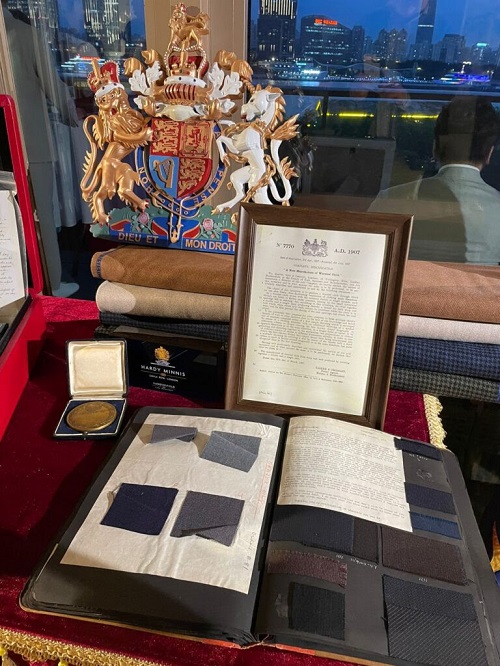
UKFT made a resounding return to Intertextile Shanghai after a four-year hiatus, leading a contingent of 12 UK companies and showcasing fabrics from an additional 21. This return underscores the growing significance of the Chinese and broader Asian textile markets for UK businesses.
UK Presence amidst global textile titans
The UK pavilion, nestled within the prestigious Salon Europe at Intertextile, hosted renowned British textile manufacturers alongside their Chinese agents. The UKFT stand, drawing inspiration from its successful displays at Milano Unica, further amplified the UK's presence, featuring a wide array of fabrics and swatches, including those from Lochcarron and Macnaughton, riding the wave of tartan and tweed popularity following Dior's Cruise 2025 show.
Fostering connections and celebrating achievements
UKFT actively engaged with attendees, distributing bilingual handouts to facilitate connections between buyers and UK companies. The organization also participated in the show's 30th-anniversary celebrations, receiving an Outstanding Contribution Award on behalf of the UK textile industry.
Navigating complexities and embracing opportunities
The show highlighted both the challenges and opportunities presented by the Chinese market. While UK companies often approach China with caution, the market's vast potential for quality imported fabrics and innovative prints remains undeniable. The dominance of Asian exhibitors at Intertextile and the concurrent CHIC fair further emphasizes the region's growing influence on the global textile landscape.
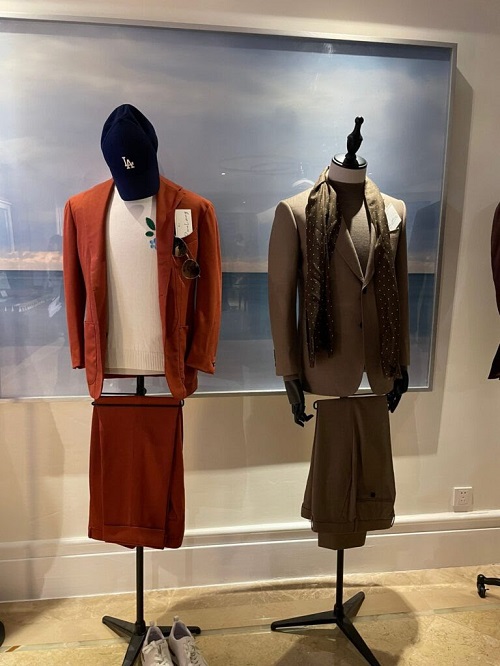
Sustainability: A key focus with divergent definitions
Sustainability emerged as a central theme, with Chinese products showcasing a strong focus on sustainable practices and technical innovation. However, the Asian definition of sustainability differs from the Western perspective, presenting both challenges and opportunities for UK businesses.
UKFT's positive outlook and future plans
Despite initial concerns, UKFT reported a positive response at Intertextile, with strong interest from Chinese and international buyers. Buoyed by this success, UKFT plans to return to Intertextile Shanghai in August 2025 and explore Messe Frankfurt’s new VIATT textile show in Vietnam in February 2025.
China's growing role and UK's strategic engagement
The show reinforced China's increasingly central role in the global textile industry. As the Asian market continues to expand, UKFT encourages UK companies to proactively engage with this region and seize the opportunities it offers.
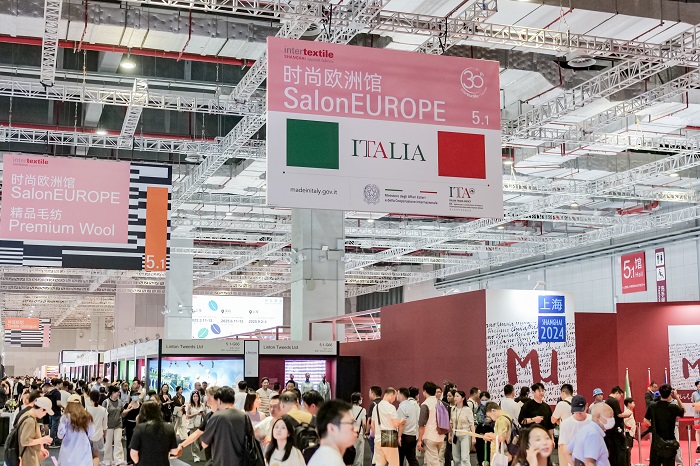
The return of Milano Unica to Intertextile Shanghai Apparel Fabrics in August 2024 was met with resounding success. Italy's presence was prominent, marked by the participation of Alessandro BarberisCanonico, past president of Milano Unica, and Giuliano Martini, director of ICE in Shanghai, at the opening ceremony.
The evening gala dinner at the Intercontinental hotel honored individuals and organizations that have demonstrated loyalty to Intertextile over three decades. Among those recognized were Milano Unica and Ornella Bignami, who has been a dedicated curator of the show's trends since the days of Interst off.
Diverse Italian companies, different stories
The 43 Italian companies present at Milano Unica in Shanghai brought a range of experiences and goals to the event. Some have been selling fabrics in China for years, while others are exploring this dynamic market for the first time.
Ruggero Rossi, with his brand Rossi Lorenzo e figli, returned to China after a five-year hiatus, noting significant changes in the market since the pandemic. While China accounts for 7-8% of his company's turnover, Rossi observed a shift in consumer behavior: "In 2023 everyone stopped, even the customers we follow most assiduously... the Chinese want to spend less." Despite this, Rossi remains optimistic, emphasizing the top-of-the-range quality of his fabrics.
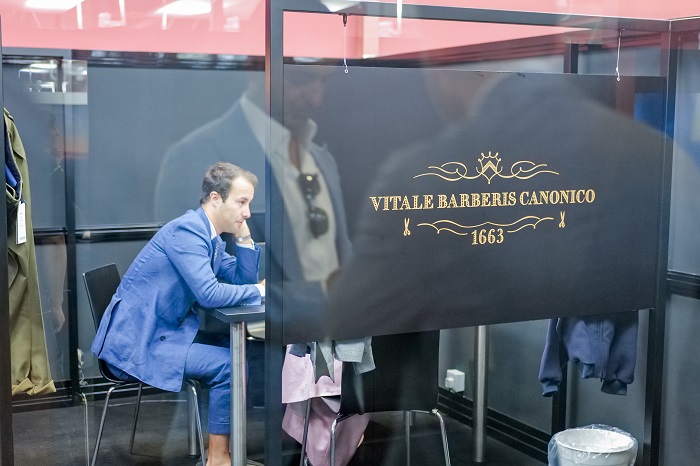
Navigating a challenging market
Teseo by Laura Clerici made its debut at Milano Unica Shanghai, aware of the challenges posed by the high-end Como range in the current market. The company's advisor acknowledged the difficulties but expressed confidence in the potential of the event's selective, invitation-only access.
UbertoCiatti, of the Prato-based Inseta, a seasoned veteran of the Chinese market, highlighted the enhanced value of being part of the Milano Unica space. He noted the market's current difficulties, stating, "Perhaps the Chinese have exaggerated with the first wave of luxury purchases and now the cards are being reshuffled."
Prato district outlook
Ciatti offered his perspective on the Prato district, expressing a cautious optimism while acknowledging the mixed situation. He attributed the current challenges to shifting priorities post-pandemic and a potential mismanagement of the exceptional 2023 market.
Milano Unica synchs with the ever-evolving Chinese market
Milano Unica's return to Intertextile Shanghai was a resounding success. It underscored the enduring appeal of Italian textile excellence in the Chinese market and highlighted the diverse experiences and perspectives of the participating companies. Despite current challenges, the event showcased resilience and a commitment to navigating the complexities of the ever-evolving Chinese market.

The joint ITMF Annual Conference and IAF World Fashion Convention, held from September 8-10 in Samarkand, Uzbekistan, underscored the country’s burgeoning influence in the global textile sector. Hosted by Uztextileprom, the Uzbekistan Textile and Garment Industry Association, and the Chamber of Commerce & Industry, Uzbekistan, the event drew over 350 industry leaders from more than 30 countries, signaling a pivotal moment for the industry.
Uzbekistan, known for its deep-rooted cotton production tradition and significant recent growth in textile exports, was chosen as this year’s host due to its impressive strides in sustainable development and its emerging role as a major player in the textile value chain.
Challenges and opportunities
IAF President CemAltan emphasized the crucial role of manufacturers in driving industry-wide change. “Apparel and textile manufacturers hold the keys to meaningful, positive change,” Altan noted, highlighting initiatives like decarbonization, reducing overproduction, and enhancing transparency. These efforts are essential as the industry faces high input costs, low demand, and regulatory pressures.
ITMF President KV Srinivasan echoed these sentiments, describing the current industry climate as a “perfect storm” of economic challenges. Despite these obstacles, the winners of the ITMF Awards 2024, recognized for achievements in ‘Start-up,’ ‘Sustainability & Innovation,’ and ‘International Cooperation,’ demonstrated the industry’s resilience and capacity for innovation.
Regulatory pressures and shared responsibility
The convention also spotlighted increasing global regulatory pressures on the textile sector. Altan stressed the importance of equitable distribution of the financial burden of sustainability standards across all supply chain partners, from raw material suppliers to end consumers.
Srinivasan emphasized the value of in-person meetings among industry leaders and experts from across the value chain. Such gatherings are crucial for discussing and analyzing both the immediate and long-term challenges and opportunities facing the industry.
Future outlook
The insights and partnerships formed during this historic event are expected to drive significant, positive changes across the apparel and textile industries. Both ITMF and IAF are optimistic that the collaboration and dialogue from the convention will contribute to overcoming current challenges and fostering sustainable growth in the sector.
Yarn Expo Autumn 2024 concluded on a high note, welcoming nearly 22,000 buyers from 81 countries and regions. The event showcased the textile industry's commitment to sustainability and innovation, featuring a wide array of eco-friendly products and solutions.

Diverse offerings and international participation
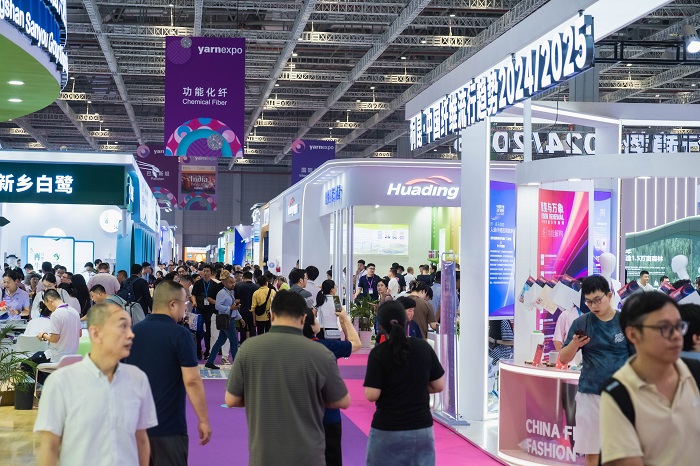
The fair attracted nearly 540 exhibitors from 15 countries and regions, including new additions like Germany and Thailand. International buyer numbers increased by 6.7%, demonstrating the show's growing global appeal. Nguyen Thi To Trang from Vietnam National Textile and Garment Group VinatexPhu Hung Joint Stock Company aptly captured the sentiment, saying, “We aim to connect with suppliers, buyers, and partners who are interested in green products, and we have met international and Chinese customers who share this interest.”
New product zones and innovative solutions
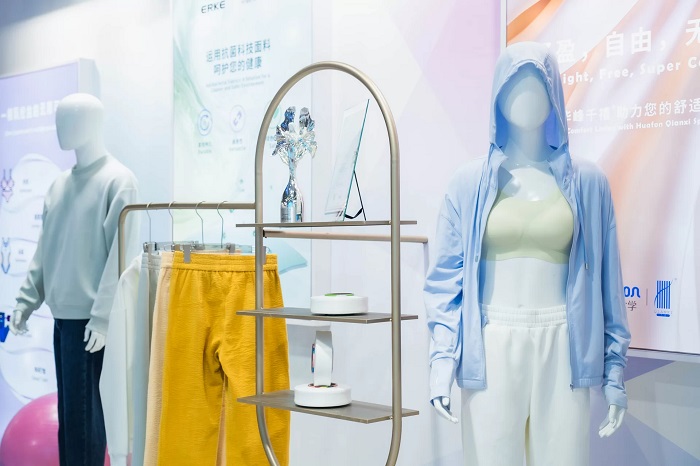
Yarn Expo Autumn introduced a new Silk Yarn Zone, further diversifying its product offerings. The show also featured quality cotton, recycled and bio-based yarns and fibres, as well as cutting-edge products utilizing bottle flakes, castor beans, and more.
Green transition in spotlight
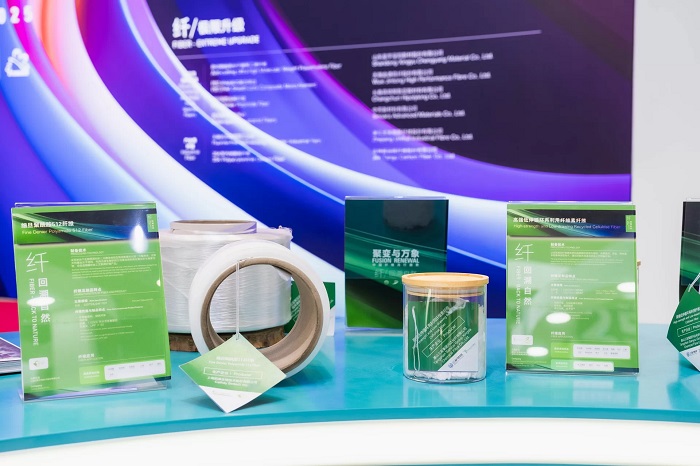
Wilmet Shea, General Manager of Messe Frankfurt (HK) Ltd, highlighted the importance of sustainability in the global economy, especially in the textile industry. She emphasized that Yarn Expo, as a member of Messe Frankfurt's Texpertise Network, actively promotes the concept of the industry's green transition.
Echoing this sentiment, Karuna Changmai from Thai Acrylic Fibre Co., Ltd., Thailand remarked, "Yarn Expo emphasizes sustainability, featuring many exhibitors dedicated to green initiatives, which is crucial for the future of the fashion industry."
Fringe Programme Highlights Sustainability
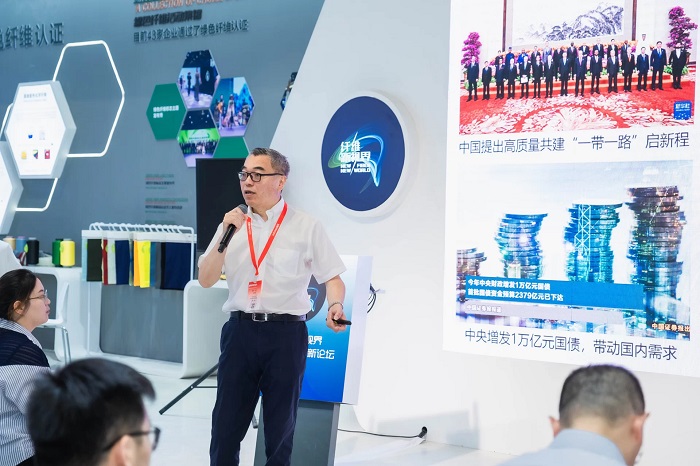
The three-day fringe programme offered valuable insights into the industry's green future. The New Fibre New World - Textile Materials Innovation Forum focused on reducing environmental impact through new technology and materials. The Tongkun - China Fibre Fashion Trends 2024/2025 Display Zone showcased the latest trends, emphasizing the balance between style and sustainability.
Key Highlights:
• India launched Kasturi Cotton, a new initiative promoting premium cotton fabrics.
• Pakistani companies made a strong presence at Intertextile Shanghai, showcasing their apparel and yarn products.
• Square Textiles from Bangladesh presented a diverse range of yarns at Yarn Expo.
Kasturi Cotton: India's Fragrant Offering at Yarn Expo 2024
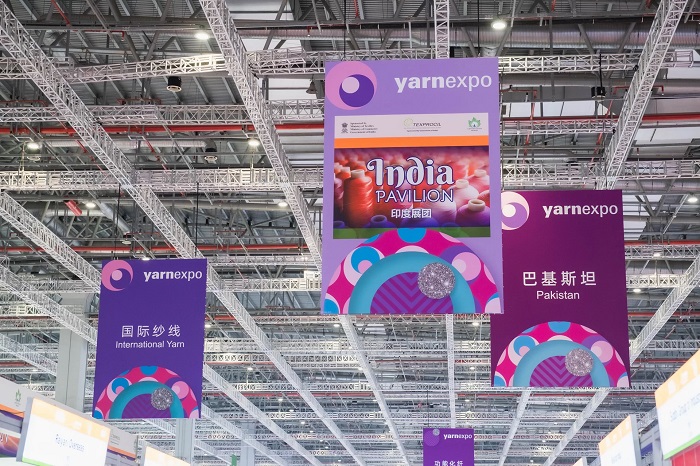
India's textile industry made a strong presence at the Yarn Expo Autumn 2024, showcasing a new initiative called Kasturi Cotton. Murali Balkrishna, Joint director, TEXPROCILexplained that the name refers to musk a product emanating from deer and widely used in the perfume industry. “But a deer does not notice the smell itself”. Murali added, “In a similar way, we think cotton fabrics of very high quality have always been present in the large volumes of the fibre that India exports and we have launched this initiative to bring more attention to it.”
Like always, the Pavilion was organised by the Cotton Textiles Export Promotion Council (TEXPROCIL), with Indo Industries, Padwa Worldwide, Texperts India, Niva Organics and other members exhibiting under the banner.
Pakistan Shines at Yarn Expo
Sixteen Pakistani exhibitors showcased their apparel and yarn products, garnering positive feedback even amidst challenging market conditions. Mahmood Textile was recognized for its ten years of participation at the event. Pakistani companies expressed optimism about future business prospects in the Chinese market.
Akmal, Marketing Manager at Mahmood Textile, shared his positive experience: “We’ve been attending ITSA & Yarn Expo for ten years, and it has always been exceptional. Messe Frankfurt Karachi’s support has been outstanding, and we look forward to continuing this successful partnership.” Adds, Adnan Butt, Director of Sales and Marketing at Yarana Textiles, “Despite the tough market conditions in China, we’ve been pleasantly surprised by the strong response from potential buyers. The level of interest has surpassed our expectations, and we are eager to further explore this promising market.”
Square Textiles, Bangladesh showcased diverse range of yarns
Square Textiles from Bangladesh participated showcasing a variety of yarns, including cotton yarn, polyester, organic yarn, and cotton-polyester blended yarns. International participation from both exhibitors and visitors was strong. Shah Muhamed Faisal, General Manager of Marketing at Square Textiles, expressing his views about the show said, 'We’re very optimistic that this platform will help us grow our business significantly”.
NEW PRODUCT LUNCHES
Lycra's Qira: Pioneering sustainable spandex from corn
Lycra Company unveiled its ground-breaking sustainable spandex, Qira, made from corn at Intertextile Shanghai. Qira, expected to launch in 2025, aims to cut carbon emissions by up to 44%. Lycra also highlighted other eco-friendly products and its partnership with Regina Miracle showcasing Lycra Adaptiv for inclusive sizing.“We have been thrilled to showcase our sustainable solutions,” said Jason Wang, Lycra Vice President, Asia.
Tencel embraces sustainable future with rebranding
Lenzing unveiled a fresh brand identity for its flagship lyocell fiber, Tencel, at Intertextile Shanghai. The new theme, "Nature, Future, Us," underscores Tencel's dedication to sustainability and innovation. This strategic move aims to solidify Tencel's position in the evolving textile landscape, assuring consumers of its commitment to quality, renewable resources, and traceability. “When consumers see the Tencel trademark, they can rest assured that they are choosing renewable, traceable fibres that guarantee quality and comfort,” said Kit Ping Au-Yeung, Lenzing’sExecutive Vice-President, Textile Business
Sustainable acrylic fibresfrom Thai Acrylic shine at Yarn Expo
TAF, an Aditya Birla Group company, showcased its sustainable acrylic fibersRadianza, Regel, and Pilbloc at Yarn Expo in Shanghai. These innovative fibers are designed to reduce environmental impact and offer high performance. TAF is committed to driving growth and innovation in the acrylic fiber industry through its focus on sustainability and quality."Our participation in Yarn Expo underscores our commitment to driving global growth and innovation within the acrylic fiber sector," said TuhinKulshreshtha, head of Marketing, Value Added Products, TAF.
Buyer endorse Yarn Expo Autumn 2024, another successful edition Buyers were impressed by the product range and international scope of the fair. Tang Wenting, a Knitting Designer from Meige Clothing ,Shanghai noted, "Yarn Expo has made significant strides in fostering international exchange, allowing me to better understand the needs of foreign buyers.
" Sudhir Kumar, a Business Development Manager from India, was particularly pleased with opportunities show provided, "Each time I visit this platform I find something new, such as functional yarns and fabrics with unique properties", he commented.
Concurrent fairs enhance business opportunities
Yarn Expo Autumn 2024 successfully marked another successful edition and facilitated the global eco-transition in the textile industry. The event was held alongside Intertextile Shanghai Apparel Fabrics, CHIC, and PH Value, creating synergy and maximizing business opportunities for exhibitors and buyers across the entire textile value chain.
With its diverse product offerings, increased international participation, and focus on sustainability, the fair served as a vital platform for industry players to connect, collaborate, and explore new opportunities.
In order to promote recyclability and transition towards a circular economy, the European textile industry needs to reduce its dependence on PFAS (polyfluorinated alkyl substances) in clothing and other textile products, says a study conducted by the European Environment Agency (EEA).
According to this study, textiles are a significant source of PFAS pollution in Europe as these chemicals are being widely used for waterproofing, stain resistance, and durability in various products such as clothing, carpets, and household items.
Highly persistent chemicals, PFAS accumulate in humans, animals, and the environment, leading to potential health and environmental risks. The EEA study outlines EU’s efforts to limit PFAS use within the region and how such restrictions could enhance the possibility of reusing and recycling textiles. This work is part of a broader report commissioned by the EEA and complements research by other EU bodies, such as the European Chemicals Agency (ECHA).
The study indicates,there are several sustainable alternatives to PFAS available in many textile categories. However, categories like personal protective equipment for firefighters lack such viable alternatives or have inconclusive data regarding their technical and economic feasibility, it adds.
PFAS in textiles not only pose environmental and health challenges but also hinder efforts to prolong the lifespan, reuse, and recycling of textiles. Most textile waste in the EU is currently incinerated, but it's unclear if incineration adequately destroys PFAS. The briefing emphasises on the need for developing new methods to identify and separate PFAS from textiles at the end of their life cycle, a practice rarely implemented today.
The capacity to eliminate PFAS at scale must be enhanced in the EU, the study emphasises. Additionally, unregulated waste management practices, such as uncontrolled landfilling and open burning, should be avoided to prevent further environmental harm. The study concludes by saying, transitioning to sustainable alternatives and improving waste management practices will be the key to reducing PFAS pollution and advancing a circular textile economy in Europe.
Kornit Digital, a global leader in sustainable digital textile production technologies, has announced an extended partnership with DO Apparel, a custom sportswear company specializing in garments for major league teams across basketball, football, and baseball. DO Apparel has further embraced Kornit's on-demand digital production as an alternative to traditional screen printing for its sports apparel, including jerseys, uniforms, and t-shirts.
Based in Livonia, Michigan, DO Apparel provides custom sportswear for organizations including Major League Baseball, the NBA, and the NFL. The company recently invested in Kornit’s Atlas Max Poly system to enhance its production capabilities across various fabrics, such as cotton and polyester. This system allows DO Apparel to create high-quality designs, including photorealistic images, neon patterns, and 3D effects on a wide range of polyester blends.
Ronen Samuel, CEO of Kornit Digital, emphasized the growing demand for medium-run, on-demand digital production, stating that traditional screen printing can no longer meet the custom requirements of today’s team apparel market. Matt McKae, COO of DO Apparel, praised the Atlas Max Poly system for its versatility and ability to handle medium-sized orders of 500 to 1,000 pieces, calling it a significant boost for the company’s operations.
Pakistan’s textile exports increased by 5.37 per cent in the first two months of the fiscal year 2024-25 (July–August), as per data by the Pakistan Bureau of Statistics (PBS). The country's textile exports rose to $2.92 billion during this period from $2.77 billion in the same months last year, reflecting the sector's resilience amid global economic uncertainties.
Growth in the Pakistan’s textile sector was fuelled by several key segments within the industry including knitwear whose exports rose by 7.15 per centto $820.59 million as against $765.80 million in the previous year. This rise could be attributed to a growing global demand for casual and comfortable clothing, a trend that has accelerated post-pandemic.
Pakistan’s bedware exports expanded by 7.61 per cent to $505 million compared to $469 million during the same period last year. The demand for Pakistani bedware remains strong, particularly in Europe and North America, where quality textile products are highly valued.
Additionally, towel exports increased by 6.87 per cent to $170.77 million as against $160 million in the previous fiscal year. This growth highlights the competitiveness of Pakistan’s textile industry, known for meeting high international standards in both quality and production.
The RMG segment posted the highest growth, with exports rising by 18 per cent to $658.50 million from $559 million last year. This reinforces Pakistan’s growing reputation as a significant player in the global apparel market. The country’s skilled labor and cost-effective manufacturing have enhanced its position in the international fashion industry.
Sri Lanka’s apparel industry is experiencing a rebound, with factories planning to expand their workforce by 10-15 per cent this year. The sector is also bracing for a potential surge in orders from Bangladesh, should conditions there deteriorate.
According to Yohan Lawrence, Spokesperson, Joint Apparel Association Forum (JAAF), garment exports from Sri Lanka grew by 4 per cent to $417.71 million in June 2024 compared to $401.63 million in June 2023. Garment exports in July increased by 3.29 per cent to $414.38 million from $401.18 million in the previous year. This boost in exports prompted larger factories to seek an additional 10-15 per cent workforce to manage the growing demand.
To meet this need, the industry plans to rehire and train staff who had voluntarily left, with an estimated three months required to bring them up to speed.
Hemantha Kumara, Secretary General, Sri Lanka Chamber of Garment Exporters, notes, the small and medium enterprise (SME) sector has witnessed a 120 per cent rise in orders, which is expected to last through early next year, driven by increased consumer demand in major markets like the US, UK, and Europe. This uptick is anticipated to bring a strong Christmas season for the sector. However, the SME sector faces a significant shortage of skilled and unskilled workers.
Currently, the SME sector employs around 30,000 people, though the workforce has declined by 30 per cent in recent years. Factories in this sector typically employ between 50 and 500 workers, depending on their size, and are actively recruiting to meet rising demand.









